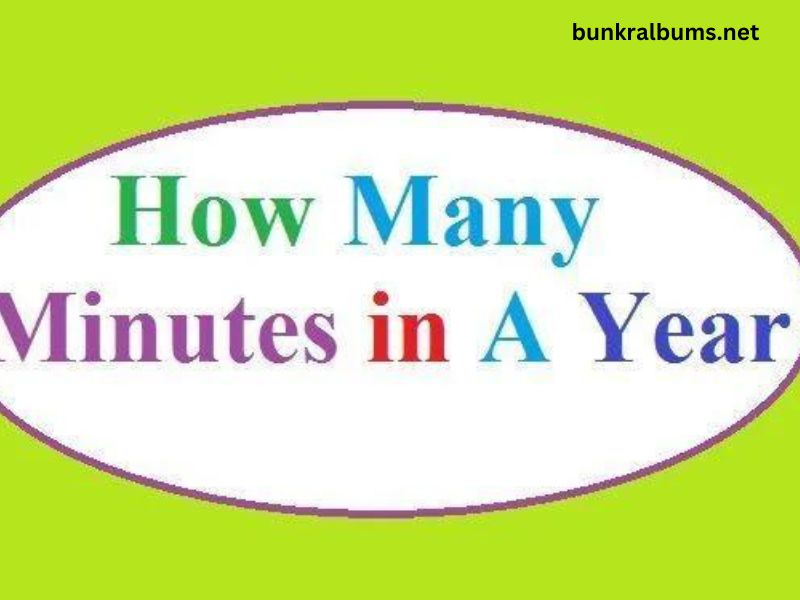The concept of time has fascinated humanity for centuries. We live our lives according to schedules, calendars, and clocks, often planning our days down to the minute. But how often do we stop to think about the sheer magnitude of time passing by, particularly in a year? One of the more interesting questions to ponder is: “How many minutes are there in a year?” The answer may seem straightforward, but the context surrounding it opens doors to various fascinating insights into timekeeping, the calendar, and how different cultures perceive time.
This article will explore not only how many minutes are in a year but also dive deeper into the history and science of time measurement, alternative calendars, and the importance of minutes in our daily lives.
Understanding the Basics: How Many Minutes in a Year?
Let’s start with the fundamental calculation.
A day is composed of 24 hours. Each hour consists of 60 minutes. Therefore:
- Minutes in a day = 24 hours/day * 60 minutes/hour = 1,440 minutes/day
Now, a regular year has 365 days, so:
- Minutes in a year = 365 days/year * 1,440 minutes/day = 525,600 minutes/year
Thus, there are 525,600 minutes in a standard (non-leap) year.
But wait, what about leap years?
Leap Year Considerations
A leap year occurs every four years to account for the fact that a solar year (the time it takes Earth to orbit the Sun) isn’t exactly 365 days long. It’s approximately 365.25 days, so every four years, we add an extra day to the calendar, making it 366 days. This additional day impacts the total number of minutes in that year.
For a leap year:
- Minutes in a leap year = 366 days/year * 1,440 minutes/day = 527,040 minutes/year
Therefore, in a leap year, there are 527,040 minutes instead of 525,600.
The Science Behind a Year
To truly appreciate the number of minutes in a year, it helps to understand what a year is. A year, as mentioned earlier, is the time it takes for the Earth to complete one orbit around the Sun. This journey around the Sun isn’t perfectly synchronized with our calendar system. The exact length of a solar year is approximately 365.2425 days, hence the need for leap years to keep our calendars aligned with the Earth’s orbit.
Without leap years, over centuries, our calendar would slowly drift out of sync with the seasons. This adjustment is essential because our agricultural, cultural, and religious activities are often tied to specific times of the year, which are in turn tied to the seasons.
Other Calendar Systems: A Different Perspective
While most of the world uses the Gregorian calendar (which accounts for leap years every four years), other cultures and societies use alternative systems. Let’s explore a few of them and see how the concept of time and years differs.
The Lunar Calendar
The lunar calendar, still used by various cultures, is based on the cycles of the Moon. A lunar year consists of 12 lunar months, each lasting about 29.5 days. This makes a lunar year approximately 354 days long, significantly shorter than the Gregorian year.
- Minutes in a lunar year = 354 days/year * 1,440 minutes/day = 509,760 minutes/year
Though shorter, the lunar calendar plays a crucial role in religious and cultural practices such as the Islamic calendar, which determines the timing of important events like Ramadan.
The Jewish Calendar
The Jewish calendar is a lunisolar calendar, meaning it combines elements of both the lunar and solar calendars. It consists of 12 or 13 months (in leap years), with leap months added to align the lunar months with the solar year.
- A typical year in the Jewish calendar has 353, 354, or 355 days, meaning the minutes range between 508,320 and 511,200.
- In a Jewish leap year, which occurs seven times in a 19-year cycle, there are 383, 384, or 385 days. This brings the minutes in a leap year to between 551,520 and 554,400.
The Mayan Calendar
The Mayan civilization used a complex calendar system that incorporated both a 260-day ceremonial calendar and a 365-day solar calendar, known as the Haab’. While the Haab’ year is comparable to the Gregorian year, the Mayans used their calendar for tracking longer cycles of time, including the famous Long Count calendar used to measure spans of thousands of years.
Understanding these alternative calendars provides a deeper appreciation for how various societies have grappled with measuring and organizing time.
The Significance of a Minute
Now that we’ve calculated how many minutes exist in a year, it’s worth considering the importance of a single minute. While 525,600 or 527,040 minutes might seem like an enormous amount of time, each individual minute holds significant value in our lives.
Personal Life
On a personal level, minutes make up the very fabric of our daily existence. How we use these minutes can shape our overall quality of life. Whether it’s spending time with loved ones, engaging in hobbies, or being productive at work, every minute counts.
Take, for instance, the following daily activities and the average time spent on them:
- Brushing your teeth: 2-3 minutes
- Making a cup of coffee: 5-10 minutes
- Commuting to work: 30-60 minutes
- Exercising: 30-60 minutes
When you break down your day into minutes, you can see how quickly time can pass, emphasizing the importance of time management.
In Popular Culture
The famous Broadway musical Rent immortalized the question “How do you measure a year?” with its iconic song “Seasons of Love.” In the song, the number of minutes in a year—525,600—forms the basis for exploring the different ways people can measure their lives: through love, joy, and human connection.
This song has resonated with audiences worldwide, not just because it’s catchy but because it speaks to the emotional weight each minute carries. Minutes become moments, and moments become memories.
The Role of Technology in Measuring Time
In modern times, technology has significantly transformed how we track and manage time. From alarm clocks to smartphone apps, we are now more aware of every passing minute than ever before. Here’s how technology has impacted our relationship with time:
Time-Tracking Apps
With the rise of productivity tools and time-tracking apps, people can now monitor how they spend each minute of their day. Apps like Toggl, Clockify, and RescueTime help individuals and businesses track time spent on tasks, optimizing productivity and work-life balance.
Wearable Technology
Wearable devices like smartwatches not only tell the time but also track daily activities, from the number of steps taken to the hours of sleep. These devices offer a tangible representation of how minutes shape our health and well-being.
Conclusion
At the end of the day—or rather, at the end of the year—there are 525,600 minutes in a typical year and 527,040 minutes in a leap year. While this might seem like an enormous number, each minute contributes to the bigger picture of our lives. Understanding time through the lens of minutes encourages us to value every moment and make the most of the time we have.
Time is one of the most valuable resources at our disposal. Whether we measure it through a Gregorian calendar, a lunar cycle, or a smartwatch, the minutes in a year offer us a chance to reflect, act, and make the most of the moments we’re given.



